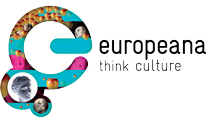MOMA in The Colbert Report
I just finished reading “Museum as Contact Zones” and later watched The Colbert Report in which Carrie Rebora Barratt, the Associate Director for Collections and Administration at The Metropolitan Museum of Art, discusses historical American art.
What she shows, discusses and says seems to me directly related to the issues in Clifford’s article. Notice that she explains how the painting they are looking at was painted in Germany and then brought back to America (interesting detail that perhaps would have been left out before the 1990s). I find it ironic that scholars such as Clifford expose the rhetoric in the tradition of critical realism, and suggest that this will help start a dialogue to slowly make things change and then fifteen years later, this is what we here the Associate Director for Collections at the MOMA say…
CLICK THIS LINK FOR: Carrie Rebora Barratt interview
To me, the more things change, the more they stay the same…or maybe you disagree with me??? Please disagree with me…


